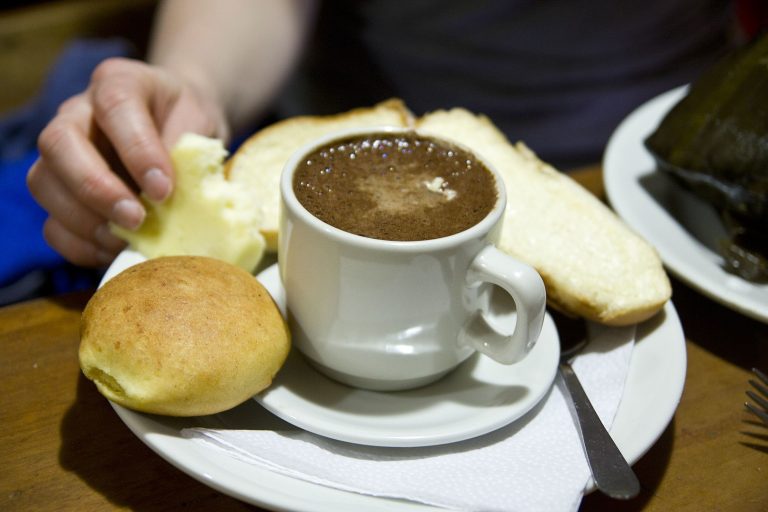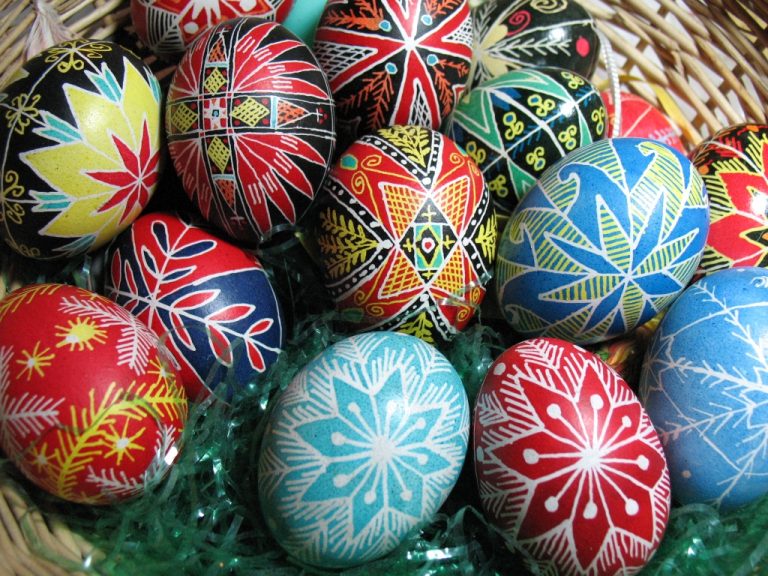To truly understand chocolate Santafereño, imagine waking up to the sound of the morning radio, playing the news station your mother listens to faithfully every morning, with colorful music marking the high point of each hour.
You get out of bed, and just as you reach the stairs, you hear your grandmother’s radio, where a soothing voice leads the prayers of the holy morning rosary, as your “abuelita” wholeheartedly thanks God for another day and devoutly raises a silent, loving plead for the health and unity of the entire family.
And as you head to the kitchen to say good morning to your mother, who arose early to start the day’s meals, you catch a glimpse of a steamy mug waiting for you on the table.
Next to it, a buttery slice of bread bought at the “panadería” just the day before, waiting to be topped with the savory surprise at the bottom of the cup: melted white cheese.
This is how most of the people in Bogota, the capital of Colombia, start the day — with Chocolate Santafereño, hot chocolate and cheese.
Success
You are now signed up for our newsletter
Success
Check your email to complete sign up
El cacao delicioso (The delicious cocoa)
Que abundante produce nuestro suelo (Which abundantly produces our soil)
Nutritivo y sabroso, (Nutritious and tasty)
De los hombres consuelo (Men’s consolation)
Y que los dioses usan en el cielo (And that gods use in Heaven)
Ode to Chocolate, Bogota, September 16th, 1829. Ignacio Gutiérrez Vergara.
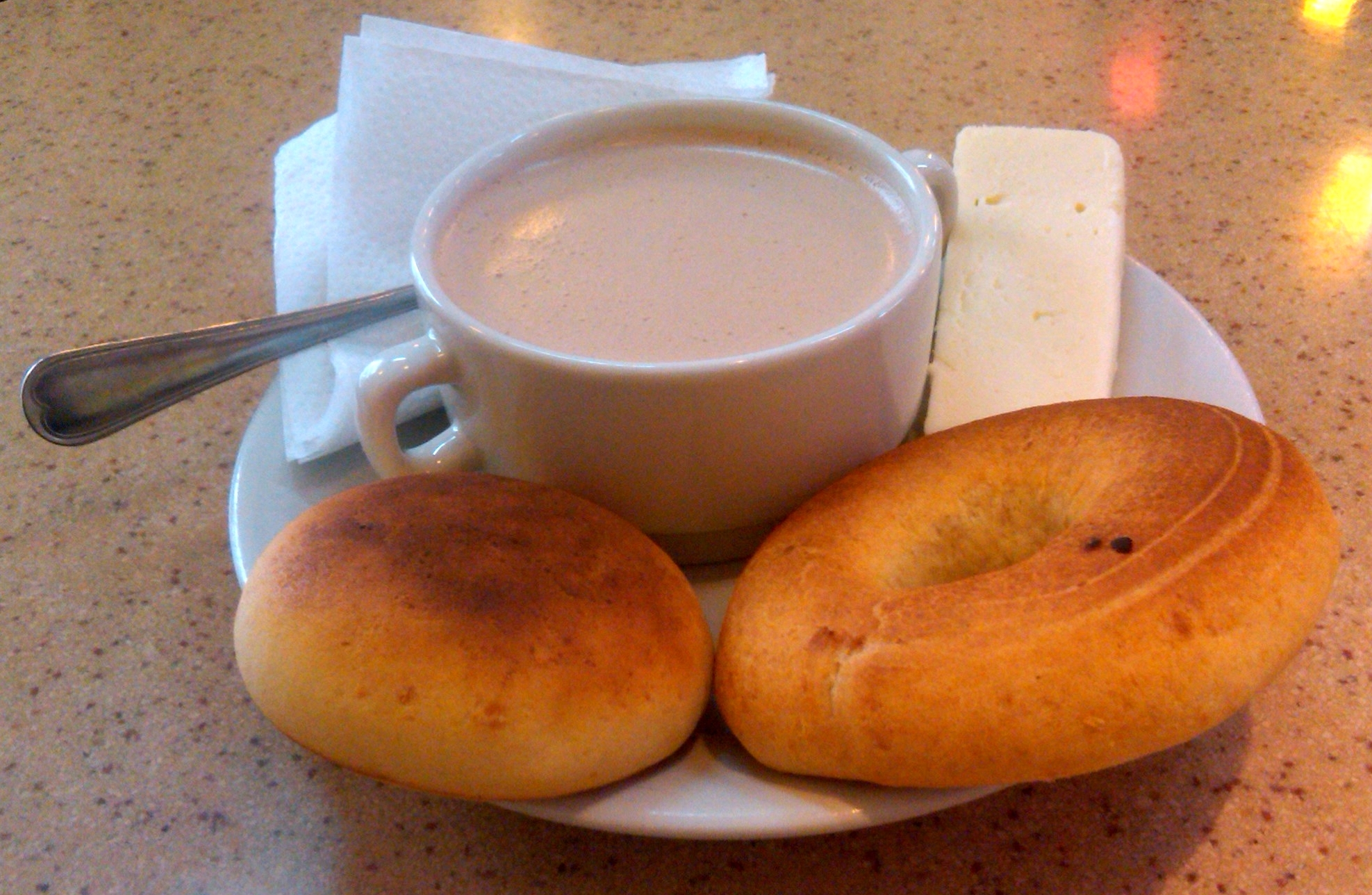
Origin
As a Spanish colony, 18th century Colombia was composed of numerous mixed races resulting from the confluence of Europeans, local Indians and African slaves.
The Mestizos — children of Spaniards and Indians — constituted the majority of the population, establishing not only the predominant physiognomy of the Colombian population, but also long-lasting customs and habits that would become an essential component of the country’s identity.
History has it that as Antonio Nariño — a prominent independentist leader— was preparing to depart to the south of the country in 1813, a lively farewell was held, where hot chocolate featured as the main drink. With its preparation being a rite, the kitchen ladies observed each step of the recipe, carefully preserved through the generations, to create the delightful and soul-soothing drink.
The years-long preparation of the drink’s ingredients was skillfully described by the illustrious Bogotan poet José María Vergara y Vergara in his book Las tres tazas (The Three Cups):
“[On the table] there were cups with golden and blue glimpses emanating from the foam of a hot chocolate that had been stored in the form of tablets for eight years in large cedar chests. The cocoa had come from Cúcuta, and to grind it, all of the rules of this art —today so forgotten— had been observed.
Aromatic cinnamon had been added to the mass of cocoa, and the mixture had been moistened with wine. Each tablet had then been wrapped in paper to be placed in a cedar chest where it would spend the next eight years.”
The salty touch
It is unclear when Colombians started to drop cheese in their hot chocolate, but it is believed that cheese made its way into the recipe via the treats that are served with it: pan de yuca (cassava cheese bread), and almojábana (corn cheese bread), which are ultimately topped with even more cheese.
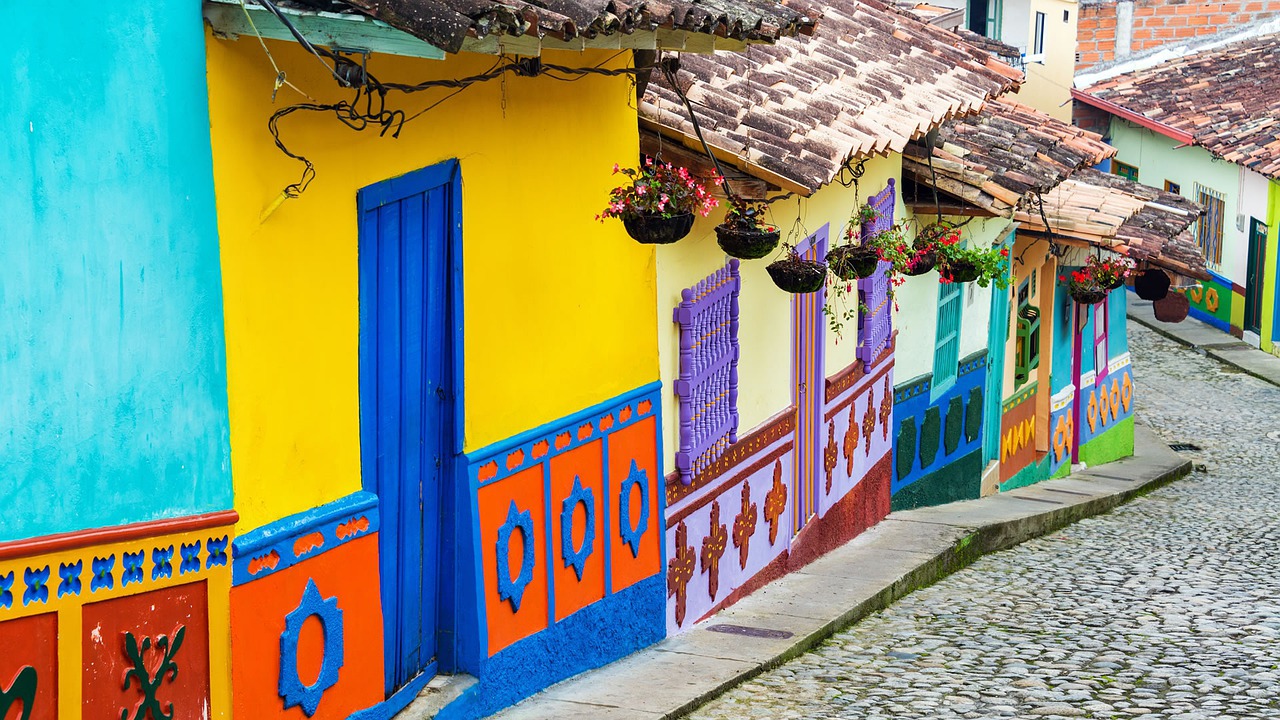
The custom is to place cubes of cheese in the bottom of the cup before adding the boiling beverage. Once the cheese begins to melt, a spoon is used to scoop up the stretchy delight, which is eaten straight from the spoon to experience the harmonious contrast between sweet and salty, all in one bite.
The scooping of each piece of cheese is alternated with a casual sip of hot chocolate to further blend the two flavors on the palate.
Sobre el plato ya brilla (Already shining on the plate)
La arepa, el pan tostado, el bizcochuelo (The arepa, toasted bread, and the biscuit)
El queso y mantequilla (The cheese and the butter)
Y el hermoso espejuelo (And the beautiful mirror)
Como ornamentos de este don del cielo (As ornaments of this gift from heaven)
Ode to Chocolate, Bogota, September 16th, 1829. Ignacio Gutiérrez Vergara.
The cheese used for this recipe is queso blanco or white cheese. The authentic recipe calls for queso doble crema — literally double-cream cheese — which is handcrafted in Colombia and known for its unmistakable smooth, creamy texture and its buttery flavor.
The preparation of the sweet drink also follows traditional ways. In Colombia, hot chocolate is prepared from chocolate tablets, typically made of cocoa mass, sugar, cinnamon and cloves.
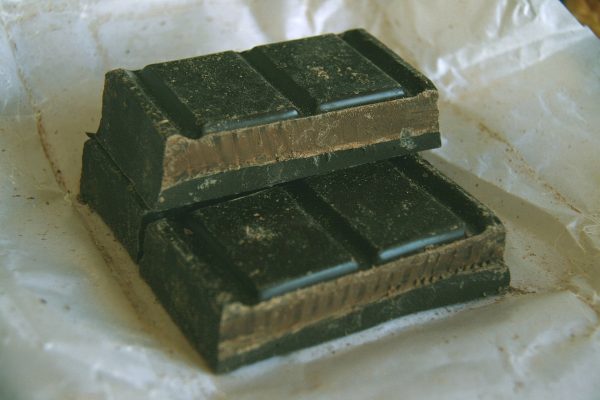
Bien tostado y molido (Well toasted and grinded)
Con el azúcar blanco o la panela (With white sugar or panela)
En pastas dividido (In tablets divided)
Sobre una limpia tela (On top of a clean cloth)
Se le mezclan vainillas y canela. (Vanilla and cinnamon are added)
Ode to Chocolate, Bogota, September 16th, 1829. Ignacio Gutiérrez Vergara
Although the traditional version is made with water, many Colombians prefer to use whole milk for a creamier texture. Once the liquid boils over high heat, the chocolate tablets are added, one by one, to a traditional metal pot called chocolatera.
The drink is then mixed with a molinillo — a wooden whisk — which is held between the palms and turned by rubbing the palms together to create the fine froth that characterizes Colombian hot chocolate. José María Vergara y Vergara described the preparation process in Las tres tazas:
“The water had boiled once when the tablet was added; and then it was allowed to boil twice more, letting the bar dissolve slowly. The molinillo did not serve to break the respectable tablet by heavy blows, as ignoble cooks do today; no, in that golden age the molinillo was used for nothing more than whisking the hot chocolate after letting it boil three times, and by scientifically mixing its generous particles, make it produce that foam with golden and blue glimpses, which today is only seen in the homes of a few esteemed families.”
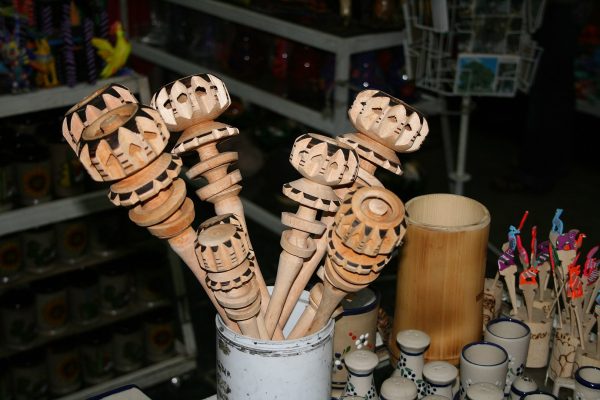
Recipe: Chocolate Santafereño
Ingredients (serves four)
- 4 cups milk (or water)
- 6 squares of 50-70% dark chocolate, or 4 tablets of traditional Colombian chocolate (Luker, Corona or Chocolate Sol are some recognized brands)
- 1 cinnamon stick or ¼ tsp of cinnamon powder
- 2 cloves
- ¼ cup sugar, agave, or sweetener of choice
- 10 oz of queso blanco, or other creamy white cheese, such as mozzarella or munster cheese
Preparation:
- Heat the milk in a saucepan on medium heat to just below the simmering point.
- Add the cinnamon, cloves and sugar; stir and then bring to a boil.
- Add the chocolate squares to the mixture and allow it to melt for a minute.
- Whisk vigorously until chocolate is completely dissolved.
- Remove from heat and take out cinnamon sticks and cloves.
- Chop cheese into cubes and divide evenly into four cups
- Pour hot chocolate — make sure it’s hot! — into the mugs and serve immediately with a spoon.



